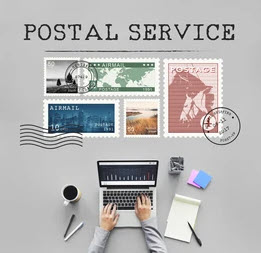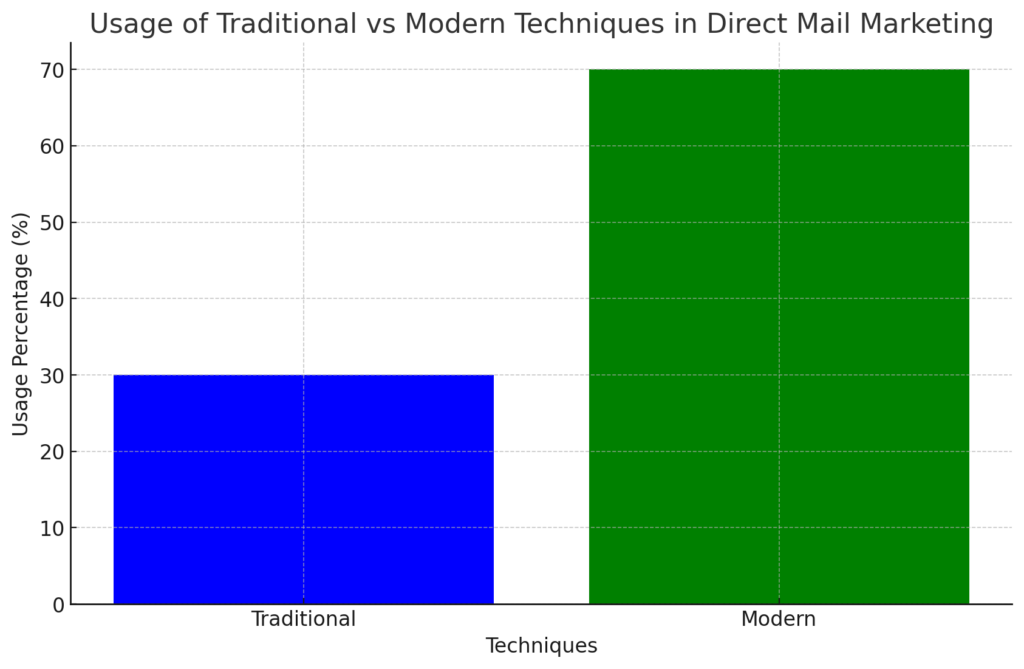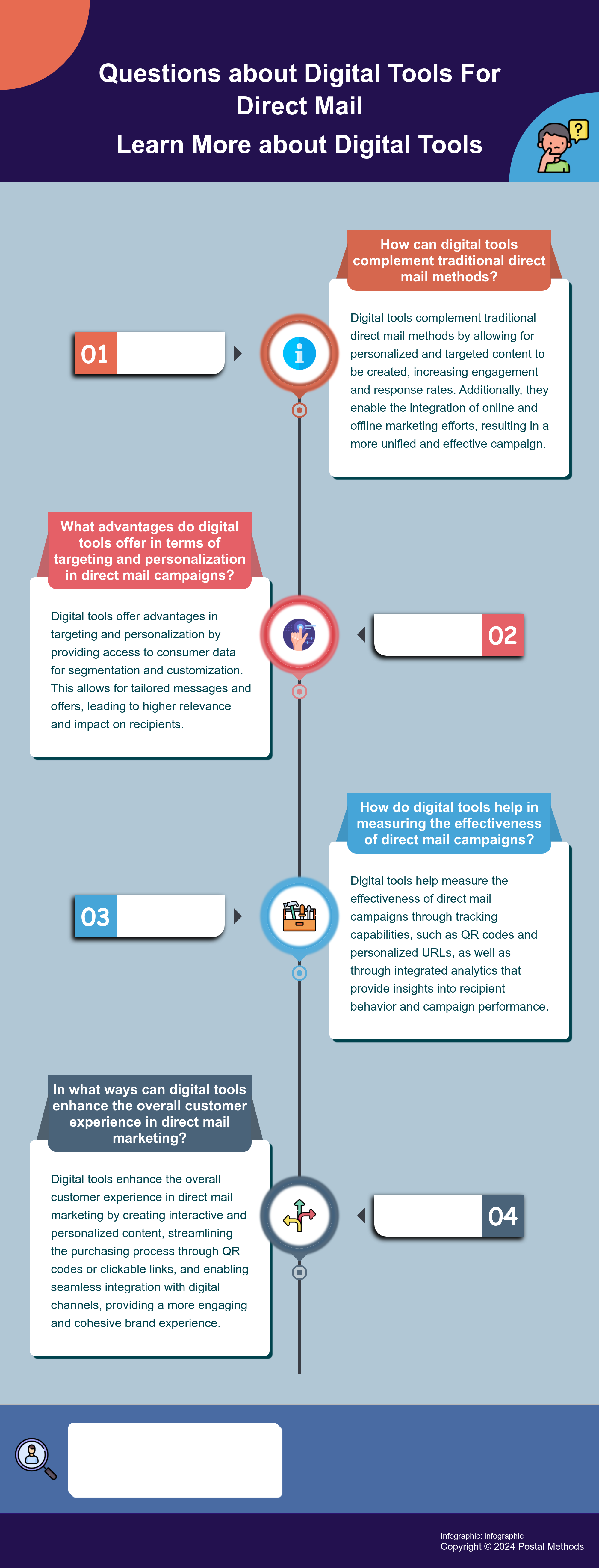
The Evolution of Direct Mail: Combining Traditional Techniques with Modern Marketing Strategies
The Resurgence of Direct Mail
According to Deloitte research, nearly a third of US consumers have felt swamped by digital devices and subscription management since 2020, leading marketers back towards the traditional medium of direct mail marketing. Contemporary marketers are rediscovering this tried-and-tested form of communication and its unique way of closing the gap between brands and customers.
Embracing a Mix of Traditional Techniques and Modern Strategies
In today’s competitive market, businesses are finding ways to leverage the strengths of direct mail with advancements in technology to create more impactful strategies. By combining the tangibility and personal touch of traditional direct mail with targeted, data-driven digital techniques like machine learning and smart analytics, they’re delivering enhanced customer experiences along with superior brand awareness. This innovative combination is creating an appealing mix of tactile nostalgia and smart, modern relevance that customers appreciate.

The Traditional Appeal of Direct Mail
Understanding the Basics of Direct Mail
Direct mail marketing involves sending physical mail to potential or current customers with the intent of promoting your business. Key components of a direct mail piece typically include clear identification (logo or business name), a strong call-to-action (CTA), and clear avenues for recipients to reach you, such as a phone number, email address, or website. Incorporating services like online print and mail services and letter printing and mailing services can streamline this process.
To make direct mail campaigns most effective:
- Keep them clutter-free and focused
- Use clear and easily readable fonts
- Make the CTA a central part of the design
- Know your target audience and customize your message accordingly
- Test your campaign before a full rollout
- Always proofread your content to avoid costly errors
Why Does Direct Mail Still Work?
Direct mail continues to be an effective marketing tool for several reasons. Here are three key factors:
- Interactivity: Direct mail is a tangible and interactive medium. When customers receive a physical item in the mail, they engage with it on a deeper level than digital media, especially if it includes a promotional offer or CTA that encourages further action.
- Memorability: Direct mail stands out in an era where digital communication dominates. Receiving something in the mail can evoke positive, nostalgic feelings, making your brand more memorable. Personal touches like a customer’s name or a handwritten signature can further strengthen this connection.
- Wide Demographics: Direct mail has a broader reach than many digital channels. It can connect with audiences who may not be on social media or email, effectively turning potential missed opportunities into converted customers.
“Gone are the days when direct mail was a shot in the dark. With the power of data analytics, businesses can now precisely target their audience. Integrating direct mail with data analytics allows marketers to craft a personalized mail piece, increasing the chances of catching the recipient’s eye.” – Ryan Cote, Director of Digital Services and Partner at Ballantine
The key to direct mail’s success is its targeted approach. Unlike less-personalized advertising, direct mail is highly efficient as it speaks only to those buyers most likely to be interested in what’s being promoted.
The Modern Twists in Direct Mail Marketing
Direct Mail Goes Digital
The modern spin on traditional direct mail is its integration with digital strategies, allowing businesses to personalize their mailings using targeted customer data, automate their mail deliveries, and analyze their campaigns’ success for further improvement. This integration incorporates send-mail online services and postal APIs to enhance efficiency and tracking.
In this new, data-driven model of direct mail, technology plays a crucial role. For instance, variable data printing allows businesses to customize direct mail pieces for each recipient based on their demographic or behavioral data. Augmented reality (AR) can also be incorporated to create interactive mail pieces where consumers can use their smartphones to discover online content or promotions.
Moreover, with the integration of QR codes or personalized URLs (PURLs), direct mail can effectively drive traffic to your online platforms. This not only bridges the gap between print and digital media but also gives businesses the ability to track their direct mail influence over online traffic and conversions.

Analyzing Data for Targeted Direct Mailing
In the new era of direct mail marketing, data, analytics, and AI have become game-changers. Advertisers now refine direct mail practices into targeted mailing, where recipients are selected based on database analysis to predict those most likely to respond positively. This approach is enhanced by data-driven print and mailing services such as document printing and mailing services, which enable precision targeting.
For instance, someone who has shown interest in golf may receive direct mail for golf-related products. These data-driven practices dramatically reduce mailing costs by narrowing target audiences to those most likely to become customers.
Moreover, individually targeted mail can be tailored based on previous transactions and gathered data. An all-male recipient mail group may receive a package with a male’s image, while an all-female group receives a female’s photo, personalizing the experience for each recipient.
This approach to marketing is more precise than generic mail and can lead to higher conversion rates, as recipients are likely to see something relevant to them. AI further enhances these efforts by predicting customer behavior patterns and offering insights into optimum timing and messaging strategies.
Benefits of Combining Traditional Techniques with Modern Marketing Strategies
Higher Response Rates
One of the most significant advantages of combining traditional direct mail with modern marketing strategies is the potential for improved response rates. According to the 2022 Response Rate Report from the Association of National Advertisers (ANA), direct mail campaigns have secured 5% response rates, compared to the 0.6% for email campaigns.
This improved response rate can be attributed to the physicality of direct mail; it’s one thing to delete an email and quite another to throw away physical mail. This tangibility leads to higher recognition and recollection rates, especially if the direct mail delivers a memorable or interactive experience.
Pairing physical direct mail with digital follow-ups can further enhance this response rate. For instance, reminder emails or SMS messages can prompt the recipient to act on the mail piece. Similarly, using direct mail to drive recipients to online platforms, where they can interact with the brand in real time, brings the potential for even stronger engagement.
Cost Efficiency and High Return on Investment
While direct mail can involve higher upfront costs compared to digital media, its benefits can lead to a high return on investment, making it cost-effective in the long run. The median ROI for direct mail campaigns is 29%, higher than paid search and online display, which stand at 23% and 16% respectively, according to ANA.
The increased cost-effectiveness of direct mail in recent years stems from its targeted approach and ability to integrate with digital strategies. Companies are now sending fewer but more focused and personalized mails to potential customers, leading to higher conversion rates and better returns. With saturated email inboxes, direct mail stands out and leaves a lasting impression, resulting in better customer engagement.
Furthermore, advances in print technology, such as variable data printing, have made small, targeted direct mail campaigns affordable, allowing businesses to reap the benefits without breaking the bank.
Getting Creative with Various Formats of Direct Mail
Direct mail allows for a diversity of formats and designs that capture the recipient’s attention. Everything from postcards, letters, catalogs, brochures, packages, and even unique 3D creations can provide an immersive physical experience—something not seen in digital media.
For instance, a Brazilian gym used calendars with silhouettes that got slimmer each month, illustrating the effects of consistent exercise. This creative approach not only fulfilled basic promotional objectives but also engaged recipients in a unique and memorable way.
To promote World Water Day, another marketing team sent mailers with a message that only appeared when wet, creating an impactful demonstration of the campaign message.
Innovative formats like these help direct mail rise above the noise of everyday life, creating memorable experiences that foster deep connections between brands and their audiences. The tactile nature of direct mail can engage more sensory experiences compared to digital, which subsequently leads to a more lasting impact and higher response rates.
How to Create an Effective Direct Mail Campaign
Identifying Your Audience
One fundamental step in creating an effective direct mail campaign is identifying your target audience. Defining a specific demographic with shared characteristics or interests, such as age, gender, income level, or homeowner status, enables you to tailor your message and offer significantly.
For instance, if your product is a high-quality pet food, your target audience could be pet owners with a higher income level who prioritize their pets’ nutrition. By conducting market research and utilizing customer data, you can identify who these individuals are and where they live.
It’s crucial to remember that your direct mail audience should be specific and detailed—more so than a general buyer persona. By doing so, you increase the chances of your mail reaching those most likely to engage with your brand, thus increasing your campaign’s overall success and effectiveness.
Designing the Campaign and Tailoring the Content
Designing a direct mail campaign requires a balance of aesthetics and clarity. Firstly, your mail should visually stand out without compromising your main message or call-to-action. Flat designs and vibrant colors can make your mail more visually appealing.
Your design options aren’t just restricted to color schemes and layout. Innovative techniques like embossing, fold-outs, die cuts, or AR elements can add a surprise factor to your direct mail, inviting more engagement from the recipient.
Accompanying these design elements, the content of your mail should be strategically editable to each recipient. For instance, a clothing brand sending mails to their customer database may use weather data to suggest seasonally appropriate clothing based on the recipient’s location, elevating the level of personalization. Such tailoring ensures the direct mail’s content resonates more personally with each recipient, potentially increasing engagement rates. Adding custom mailing solutions can further enhance this personalization aspect.
Testing, Tracking, and Tweaking Your Campaign
Like any marketing strategy, successful direct mail campaigns involve testing, tracking, and tweaking. Start with small-scale tests to analyze factors like the time of delivery, design, or the success of your call-to-action. Once you’ve analyzed these test results, refine your approach for the full campaign.
Tracking is crucial to understanding your campaign’s success. Techniques such as unique coupon codes, dedicated phone numbers, or personalized URLs can help you track the response. The integration of letter mailing APIs and modern systems now delivers real-time open and click tracking, providing key insights into customer behavior.
Lastly, be prepared to tweak elements of your campaign. While initial tests will hopefully prevent any major slip-ups, almost every campaign will require at least some tweaks to maximize its potential. Continuous analysis and improvement, backed by data from sources like postal APIs, are ultimately the keys to a successful direct mail campaign.
Remember, data is the best friend of any marketing campaign. Disciplined, data-driven campaigns often deliver positive ROI. Access to real-time campaign performance data offers a comprehensive view of your campaign’s response, customer activity, and behavior, allowing you to refine your strategies.
Case Studies: Success Stories with Direct Mail
How Businesses from Different Sectors Find Success
Many businesses have found success using direct mail in conjunction with modern marketing strategies. For example, a leading home furniture company saw a 147% boost in sales by combining their direct mail with follow-up emails and retargeted social media ads. On the other hand, a renowned toy manufacturer effectively used AR in their direct mail to bring their toys to life on their customers’ screens. This creative fusion of tactile and digital drove their sales up by 30%.
Even organizations in education and healthcare have effectively utilized this strategy to reach out to their prospects and keep their stakeholders informed. In healthcare, particularly, the use of HIPAA compliant printing and mailing services ensures that the mailings meet strict privacy standards, making direct mail a viable option even in sensitive sectors.
These examples from diverse sectors show that direct mail is not only applicable to various industries but can also deliver real, tangible results when incorporated with innovative strategies.
Trusted by Top Companies and Institutions
The effectiveness of direct mail, combined with modern marketing tactics, is such that it’s trusted by companies ranging from Fortune 500 powerhouses to small, local favorites. Companies for whom expertise, credibility, and ROI are critical have found success with these strategies.
For instance, a leading tech giant boosted event registration by 300% by sending personalized invitations via direct mail. Similarly, a global automobile brand saw a 15% increase in sales by integrating QR codes in their direct mail pieces, driving traffic to their virtual showrooms.
Institutions such as universities and non-profit organizations have also harnessed the power of direct mail. One Ivy League university noted a 35% increase in alumni participation during their fundraising campaign by sending personalized, sentimental direct mail to past students.
These successful endeavors highlight the growing trust and dependency on direct mail marketing in sectors far and wide.
Frequently Asked Questions
How Much Does Direct Mail Advertising Cost?
The cost of direct mail advertising can vary greatly based on several factors. These include the design of your materials, the size and weight of the mails, the amount of personalization, and the size of your campaign. For example, a simple postcard can cost as low as $0.79 per card with services like Mailchimp. However, more complex mailings, like catalogs could cost around $10 per piece due to their size and weight.
Additionally, if you’re incorporating premium services like variable data printing or AR elements, there would be an extra charge. Be sure to factor in the cost of mailing lists if you are renting them and the cost of postage as well, which can be estimated using tools like the USPS calculator. Services such as invoice print and mail and legal printing service can also impact the overall cost, depending on the nature of the mail content.
Keep in mind, while direct mail may have higher upfront costs than digital marketing tactics, it offers tangible benefits such as higher response rates and improved customer engagement, potentially providing a higher return on investment in the long run.
Is Direct Mail Marketing Better Than Email Marketing?
Direct mail marketing and email marketing each have their own strengths, and the choice between them depends on your specific business needs and target audience.
While email marketing offers quick delivery, easy tracking, and low upfront costs, its effectiveness can be compromised due to cluttered inboxes and spam filters. On the contrary, direct mail can stand out and make a lasting, tangible impression. It is also more likely to reach a broader demographic, particularly those who may not rely heavily on digital media.
Moreover, direct mail has a higher response rate compared to email marketing (5% versus 0.6% according to the ANA), especially when personalized using customer data. However, for optimum results, many businesses combine these two strategies, using direct mail to capture attention and email marketing for follow-ups or additional engagements. It’s all about finding the right blend for your particular business model and audience.
How Do I Set Up a Direct Mail Campaign?
Setting up a direct mail campaign involves following a series of steps. Here’s a brief overview:
- Identify your target audience: Use customer data, market research, and buyer personas to define the recipients of your marketing campaign.
- Create your content and design: Tailor your message according to your target audience, and design your mail pieces to capture attention and prompt action. Utilizing custom mailing solutions and letter printing and mailing services can add a professional touch to your campaign.
- Select your mailing list: Based on your target audience, compile your mailing list. You might source this from your current customer database, rent one from a reputable vendor, or collect addresses using a campaign on your website.
- Launch your campaign: Send out your mail either by using a professional mail service or the postal service. Be sure to stagger your mail out if it’s a large campaign.
- Track and measure: Incorporate tracking methods to monitor how recipients engage with your campaign. This could involve unique URLs, QR codes, or response forms.
- Evaluate and adjust: Based on the feedback from your tracking methods, analyze your campaign’s effectiveness. Make the necessary adjustments and improvements for future campaigns.
Remember, it’s important to align your direct mail campaign with your overall marketing strategy for better brand consistency and effectiveness.
Does Direct Mail Marketing Work?
Yes, direct mail marketing does work. Despite living in an increasingly digital world, the traditional method of direct mail marketing continues to yield high results. In fact, according to ANA, response rates for direct mail are actually increasing year over year.
This effectiveness comes from the unique blend of tangible, memorable interaction with a highly targeted approach. With the addition of personalized messages and creative designs, direct mail can result in higher engagement and conversion rates than some digital media counterparts.
Furthermore, modern data analysis and digital touchpoints have further bolstered the potential of direct mail by refining the targeted approach and integrating offline and online marketing methods. Therefore, when executed well, direct mail marketing can indeed offer a substantial return on investment.
Conclusion
In conclusion, the evolution of direct mail, especially when leveraging the capabilities of innovative services like postal Methods, offers an exciting frontier for businesses looking to enhance their marketing strategies. PostalMethods revolutionizes traditional mailing processes by providing a secure, online portal for handling all print and mail operations, which is a perfect complement to modern direct mail strategies.
With Postal Methods, businesses can easily integrate their direct mail campaigns with advanced digital tools. Features like the QuickSend Portal, email-based mail delivery, and RESTful API integration allow for seamless transition between digital and physical mailing, enhancing both the efficiency and impact of direct mail campaigns. This modern approach enables businesses to focus on their growth, leaving the complexities of mail handling to PostalMethods‘ expert team and cutting-edge technology.
Furthermore, the flexibility of PostalMethods in handling a variety of mailing needs – from HIPAA-compliant documents to custom printing and mailing solutions, makes it a versatile tool for businesses across various industries. Whether you’re sending invoices, legal documents, or personalized marketing materials, PostalMethods provides the reliability and precision that modern direct mail demands.
Incorporating Postal Methods into your direct mail strategy not only simplifies the process but also opens up new possibilities for creative and targeted marketing campaigns. It’s a perfect example of how traditional direct mail techniques can evolve with the times, offering businesses a robust solution that maximizes the effectiveness of their communication efforts in a digital age.

